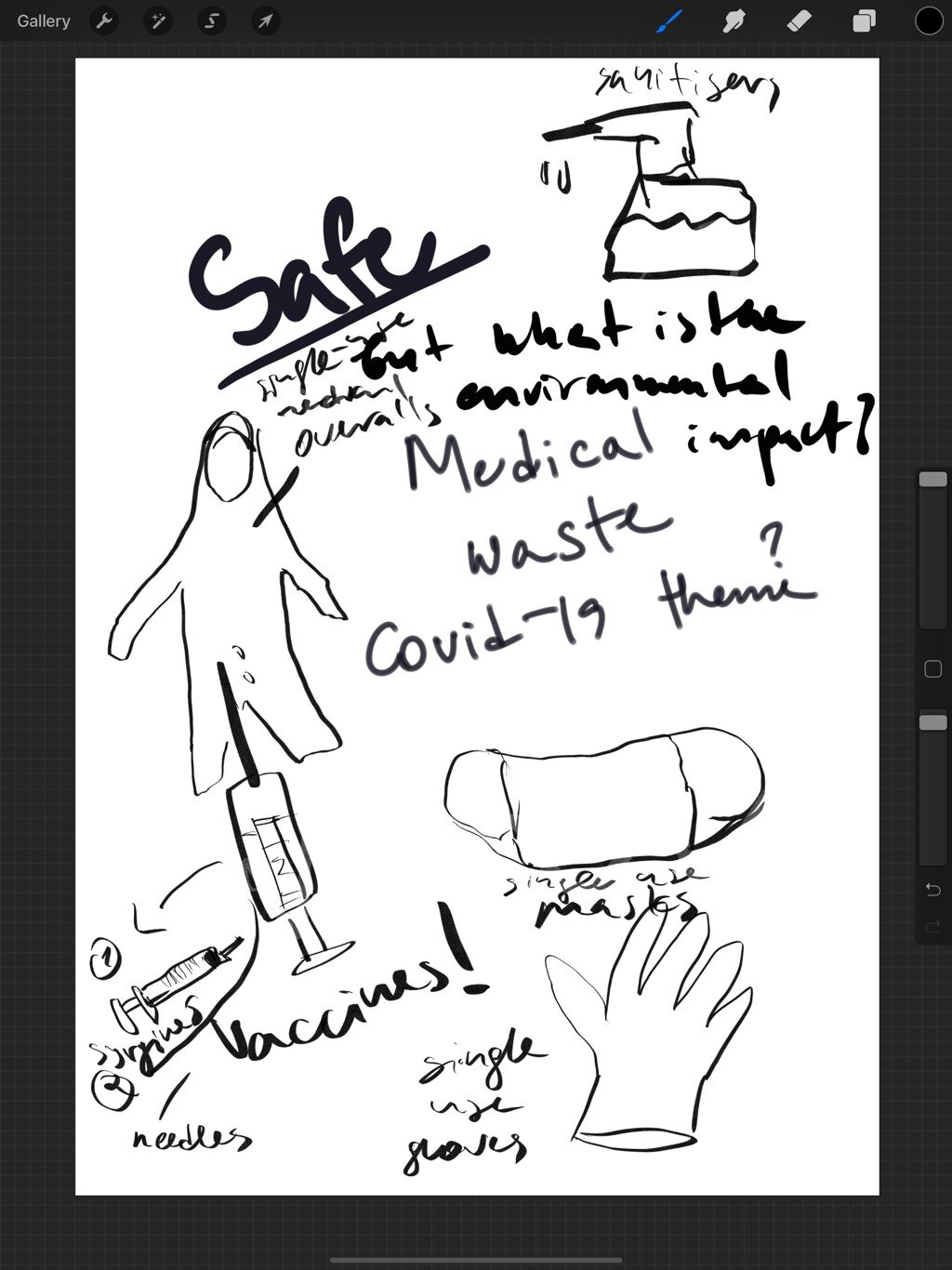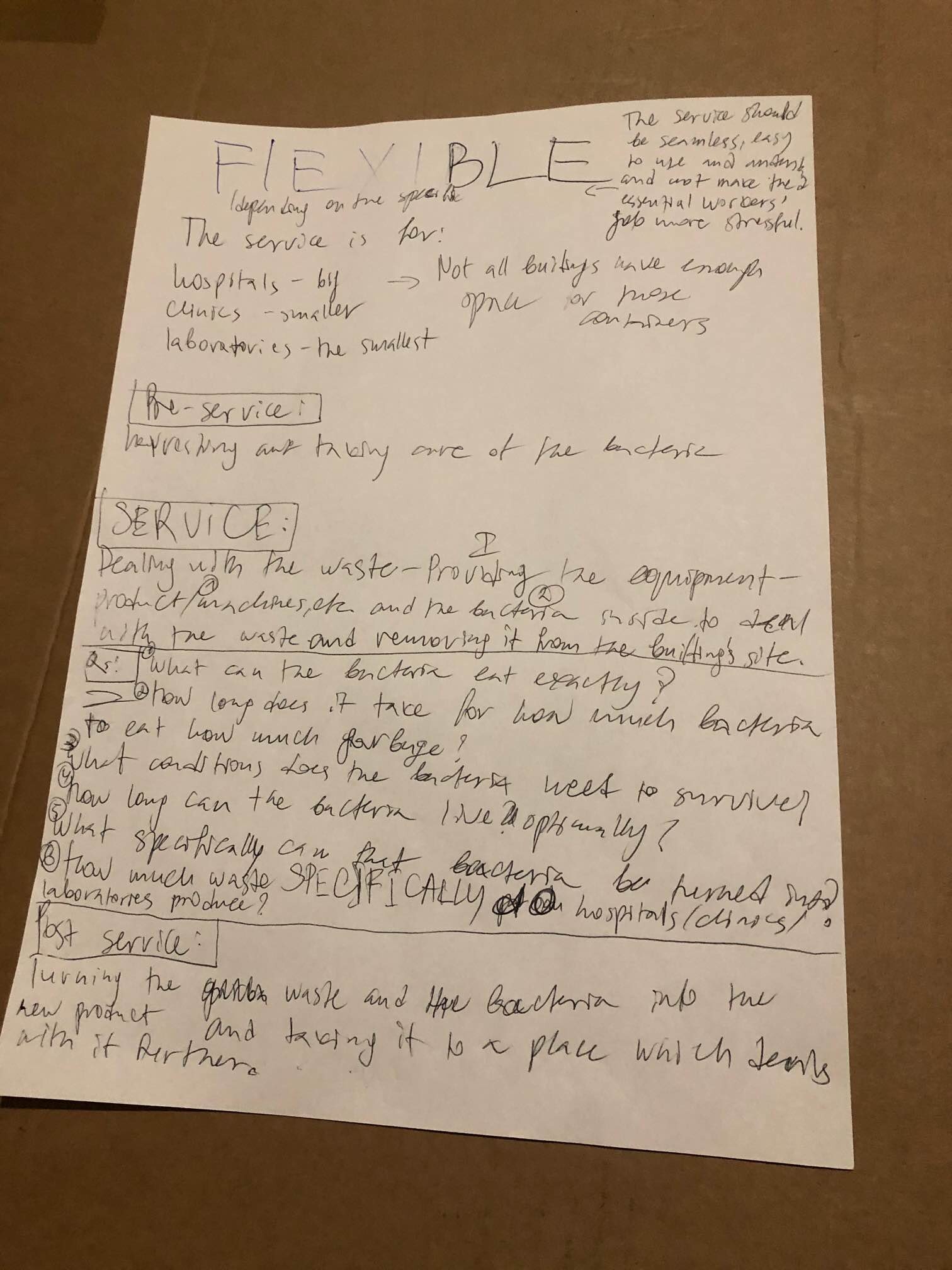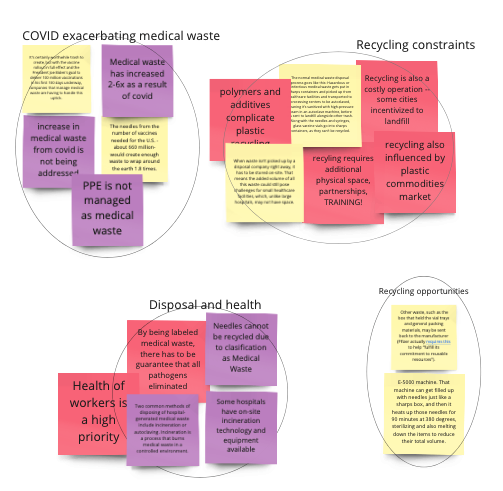INGEST-ION⊕
Creating a service to address the problems of increased non-hazardous medical waste in hospitals resulting from COVID-19 treatment and prevention.
Kulbir Bachher | Dimana Dimitrovna | David Russo | Brian Yen
(part of the Boston Service Jam, March 2021)
“During the COVID-19 outbreak, the volume of PPE (personal protective equipment) used by both healthcare personnel and patients increased exponentially. Under normal circumstances, patients do not wear facial masks and healthcare personnel do not wear protective suits, whereas each healthcare professional was required to wear a new set of protective clothing every day, and all hospital staff wore protective suits during the outbreak.”
How might we reduce the volume of non-hazardous medical waste resulting from COVID-19 protocols?
BUT FIRST, HOW DID WE GET HERE?
THIS was the initial prompt for Global Service Jam, 2021
It’s ok…we were confused too!
We started with a territory map and developed our team around the theme of Unintended Consequences.
We did initial research in 3 topic areas: The BLM Movement, COVID-19, and Social Media.
We quickly coalesced around the COVID crisis.
THE COVID-19 PROBLEM
Global healthcare systems were burdened following the spread of COVID-19 in 2020. As the public health crisis continues, some countries such as China have experienced a substantial increase in medical waste, while other countries such as the United States have undergone a reduction.*
This contrast indicates the different scopes of medical waste and waste management systems in each country. While the increase in medical waste during a pandemic is reasonable and foreseeable, an effective solution for medical waste disposal is crucial.
(*According to industry sources, a large amount of personal protective equipment (PPE) in medical institutions was not managed as medical waste during the pandemic in the United States.)
OUR EARLY THOUGHTS
THE STORY
We took inspiration from the idea of introducing bacteria into a septic system to keep it clean as our model for a strategy to control medical waste.
SERVICE BLUEPRINT
*click on the image to expand
OUR SERVICE DEMO
We identified and prototyped 2 key service moments - product delivery and a future service call.
AREAS OF ITERATION
Do we move the canister or move the enzyme?
What are the environmental concerns?
Should we add analytics?
More comparator research in trash and recycling management.
REFLECTIONS
tl;dr:
Great experience; does it happen this way in real life?
I would have liked to “show” more.
When your user is an organization, it adds layers of complexity.
The Boston Service Jam was a great way to flex my service design muscles and gain experience with tools and methods that I’m less familiar with. It led me to reflect on how the service design process happens in the real world. In our case, our design was speculative enough that it would require the development of an entire industry to address the problem, and would be a likely part of an entrepreneurial endeavor.
As a group, we struggled with “showing.” We did a great deal of talking and a great deal of telling, and although we got to showing through our prototype at the end, I think we could have benefitted from visualizing our solution more through sketches, journey maps, stakeholder maps, and ecosystem maps.
Throughout the process, I constantly asked (to myself and out loud) “Who is the customer? Who is the user?” I came to understand that our “user” is an organization. That added layers of complexity because of the increased number of stakeholders, each one having their own needs and agendas. This came out during our usability interviews and manifested itself in thinking about different touchpoints/information.












